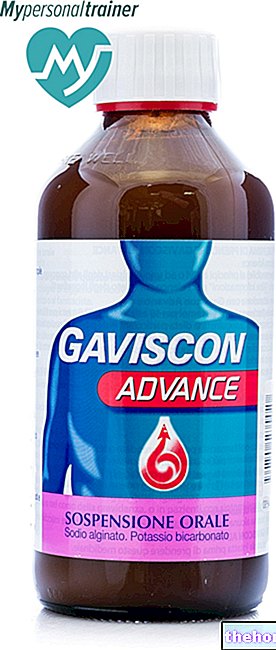Active ingredients: Isosorbide-5-mononitrate
Ismo 20 mg tablets
Ismo package inserts are available for packs:- Ismo 20 mg tablets
- Ism? Diffutab 40 mg prolonged release tablets
Indications Why is Ismo used? What is it for?
Pharmacotherapeutic group
Vasodilator
Therapeutic indications
Attack and maintenance therapy of coronary insufficiency, prevention of angina pectoris attacks. Post-cardiac infarction treatment and chronic myocardial insufficiency also in association with cardiotonics and diuretics. Due to its pharmacological profile, the substance is not suitable for the control of acute stenocardial episodes.
Contraindications When Ismo should not be used
Hypersensitivity to the active ingredient, to organic nitrates in general or to any of the excipients. Acute myocardial infarction, states of shock, cardiovascular collapse, all cases with pronounced hypotension.
Sildenafil potentiates the hypotensive effects of nitrates and, therefore, its co-administration with organic nitrates is contraindicated (see section Interactions).
Precautions for use What you need to know before taking Ismo
In case of arterial hypotension it should only be administered under medical supervision.
Use with caution in glaucoma patients; it is possible the appearance of habituation to the preparation and cross habituation with other nitro-derivatives.
Interactions Which drugs or foods can modify the effect of Ismo
Tell your doctor or pharmacist if you have recently taken any other medicines, even those without a prescription.
The concomitant administration of hypotensive drugs can intensify the effects of Ismo on blood pressure, while that of alcoholic beverages can reduce the patient's reactivity. The drug can act as a physiological antagonist of norepinephrine, acetylcholine, histamine.
Co-administration of sildenafil potentiates the hypotensive effect of organic nitrates (see section Contraindications).
Warnings It is important to know that:
It is possible the onset of drug addiction or cross habituation with other nitro-derivatives.
Pregnancy and breastfeeding
Ask your doctor or pharmacist for advice before taking any medicine. In pregnant and breastfeeding women, the product should be administered only in cases of real need, under direct medical supervision.
Effects on ability to drive and use machines
The medicine can affect the ability of patients to react: those who are engaged in driving vehicles or using machinery that require attention and vigilance should be informed of this.
Important information about some of the ingredients
If you have been told by your doctor that you have an intolerance to some sugars, contact your doctor before taking this medicinal product.
Dosage and method of use How to use Ismo: Dosage
Generally we recommend 1 tablet, 2-3 times a day. This dose can be progressively increased up to 2 tablets, 2-3 times a day, depending on the therapeutic response.
In case of particular sensitivity of the patients, it is possible to avoid the appearance of headache or arterial hypotension by starting the treatment with half tablet (10 mg) in the morning and in the evening. The drug should be administered orally after meals or just before bedtime. The tablets should not be chewed, but swallowed with plenty of water.
Overdose What to do if you have taken too much Ismo
In case of accidental ingestion / intake of an excessive dose of Ismo, notify your doctor immediately or go to the nearest hospital.
There are no known overdose data. Should this happen, it is advisable to induce vomiting and / or resort to gastric lavage.
Check whether the patient has ingested other drugs at the same time and monitor the haemodynamic parameters in any case.
If you have any further questions on the use of Ismo, ask your doctor or pharmacist.
Side Effects What are the side effects of Ismo
Like all medicines, Ismo can cause side effects, although not everybody gets them.
At the prescribed doses, no significant side effects were found. As with all nitro-derivatives, headaches of varying intensity and duration, skin vasodilation with redness, transient episodes of dizziness and asthenia are possible. Orthostatic arterial hypotension, skin manifestations, exfoliative dermatitis.
Occasionally there may be a marked sensitivity to the hypotensive effects of nitro-derivatives with the appearance even at therapeutic doses of accentuated symptoms such as: nausea, vomiting, asthenia, agitation, pallor, sweating and collapse. In case of onset of one or more of the side effects described above, the attending physician should be consulted. Symptoms of circulatory collapse may occur in patients with circulatory lability. These and other symptoms, such as nitrate headaches, can be largely avoided by starting treatment with half a tablet in the morning and half a tablet in the evening.
Compliance with the instructions contained in the package leaflet reduces the risk of undesirable effects.
Reporting of side effects
If you get any side effects, talk to your doctor or pharmacist. This includes any possible side effects not listed in this leaflet. You can also report side effects directly via the national reporting system at https://www.aifa.gov.it/content/segnalazioni-reazioni-avverse. By reporting side effects you can help provide more information on safety. of this medicine.
Expiry and Retention
Expiry: see the expiry date indicated on the package.
The expiry date indicated refers to the product in intact packaging, correctly stored.
Warning: do not use the product after the expiry date indicated on the package
Medicines should not be disposed of via wastewater or household waste. Ask your pharmacist how to dispose of medicines you no longer use. This will help protect the environment.
Do not store above 30 ° C.
KEEP THE MEDICINAL PRODUCT OUT OF THE SIGHT AND REACH OF CHILDREN
Composition and pharmaceutical form
Composition
1 tablet contains: active ingredient: isosorbide-5-mononitrate 20 mg.
Excipients: anhydrous lactose, anhydrous colloidal silica, magnesium stearate.
Pharmaceutical form and content
50 tablets.
Source Package Leaflet: AIFA (Italian Medicines Agency). Content published in January 2016. The information present may not be up-to-date.
To have access to the most up-to-date version, it is advisable to access the AIFA (Italian Medicines Agency) website. Disclaimer and useful information.
01.0 NAME OF THE MEDICINAL PRODUCT
ISMO 20 MG TABLETS
02.0 QUALITATIVE AND QUANTITATIVE COMPOSITION
1 tablet contains: isosorbide-5-mononitrate 20 mg. For excipients, see 6.1.
03.0 PHARMACEUTICAL FORM
Tablets.
04.0 CLINICAL INFORMATION
04.1 Therapeutic indications
Attack and maintenance therapy of coronary insufficiency, prevention of angina pectoris attacks. Post-cardiac infarction treatment and chronic myocardial insufficiency also in association with cardiotonics and diuretics. Due to its pharmacological profile, the substance is not suitable for the control of acute stenocardial episodes.
04.2 Posology and method of administration
Unless otherwise prescribed, the following dosage is recommended for prolonged therapies:
20 mg 2-3 times a day. Thanks to the good tolerability of the drug, the dose can be doubled without any risk.
40 mg 2-3 times a day. The dosage can be adapted by the attending physician to the individual case. In case of particular sensitivity of patients, it is possible to avoid the appearance of headache or arterial hypotension by starting treatment with 10 mg in the morning and in the evening.
04.3 Contraindications
Hypersensitivity to the drug, acute heart attack, acute circulatory failure (shock, circulatory collapse), severe arterial hypotension.
Sildenafil potentiates the hypotensive effects of nitrates and, therefore, its co-administration with organic nitrates is contraindicated (see section Interactions).
04.4 Special warnings and appropriate precautions for use
Use with caution in glaucoma patients. In case of arterial hypotension it should only be administered under medical supervision.
It is possible the appearance of habituation to the preparation and cross habituation with other nitro-derivatives.
Patients with rare hereditary problems of galactose intolerance, the Lapp lactase deficiency, or glucose-galactose malabsorption should not take this medicine.
04.5 Interactions with other medicinal products and other forms of interaction
The concomitant intake of alcohol can potentiate the hypotensive effect or influence the patient's ability to react. In the case of simultaneous administration of antihypertensive agents with high doses of the substance, an enhancement of the hypotensive effect can be observed. Ismo 20 can act as a physiological antagonist of norepinephrine, acetylcholine, histamine.
Co-administration of sildenafil potentiates the hypotensive effect of organic nitrates (see section Contraindications).
04.6 Pregnancy and lactation
In pregnant and breastfeeding women, the product should be administered only in cases of real need, under direct medical supervision.
04.7 Effects on ability to drive and use machines
Ismo 20 can influence the reaction capacity of patients: those who are engaged in driving cars or using machinery that require attention and vigilance must be informed of this.
04.8 Undesirable effects
At the prescribed doses, no significant side effects were found. As with all nitro-derivatives, headaches of varying intensity and duration, skin vasodilation with redness, transient episodes of dizziness and asthenia are possible. Orthostatic arterial hypotension, skin manifestations, exfoliative dermatitis.
Occasionally there may be a marked sensitivity to the hypotensive effects of nitro-derivatives with the appearance even at therapeutic doses of accentuated symptoms such as: nausea, vomiting, asthenia, agitation, pallor, sweating and collapse. In case of onset of one or more of the side effects described above, the attending physician should be consulted. Symptoms of collapse may occur upon first intake in patients with circulatory lability.
04.9 Overdose
There are no known overdose data. Should this happen, it is advisable to induce vomiting and / or resort to gastric lavage.
Check whether the patient has ingested other drugs at the same time and monitor the haemodynamic parameters in any case.
05.0 PHARMACOLOGICAL PROPERTIES
05.1 Pharmacodynamic properties
Pharmacotherapeutic group: vasodilator, ATC code: C01DA14
Isosorbide-5-mononitrate is the major metabolite in both animals and humans of isosorbide dinitrate, a drug widely used for the treatment of coronary insufficiency. From a pharmacodynamic point of view, isosorbide-5-mononitrate, as well as the parent substance isosorbide dinitrate, it has a "direct relaxing action on the vascular smooth muscle. Through a" direct action on the peripheral venous wall there is a venous vasodilation, with a sequestration of "pooling" blood as occurs for a bloodletting.
Cardiac activity is also indirectly improved: decreased venous return to the heart, decreased end-diastolic ventricular filling and therefore a drop in end-diastolic ventricular pressure, resulting in improved pump function and reduced oxygen consumption.
Furthermore, coronary anastomoses have a better degree of filling during the diastolic phase and there is a better redistribution of the flow and subendocardial level, the most sensitive site of the ischemic episode.
All "main action on venous capacitance (reduction of venous return and therefore of preload myocardial) is added an "action on the arterial part of the circulation which, as a whole, is defined as an afterload drop (afterload).
Both mechanisms are responsible for the "antianginal effect of isosorbide-5-mononitrate and also for the favorable effects in heart failure. Coronary dilatation mainly affects the large branches of the coronary arteries, so no one is reached"steal effect"but rather to a favorable redistribution of myocardial blood supply with preference for ischemic areas.
05.2 "Pharmacokinetic properties
Isosorbide-5-mononitrate is rapidly and completely absorbed from the gastrointestinal tract after oral administration without presenting, unlike isosorbide dinitrate, any effect of first pass hepatic. The oral bioavailability is 100%, as shown by the blood levels, which show comparable values after oral and intravenous administration. The volume of distribution is comparable to that of body water; plasma peak between 1 and 1 ½ hours, the half-life, of about 5 hours, is 8 times higher than that of isosorbide dinitrate. It is therefore a long-acting nitrate. Isosorbide-5-mononitrate is eliminated primarily in the urine as glucuronate.
05.3 Preclinical safety data
Subacute toxicity
dog os 14 days: 50, 150, 450 mg / kg / day.
At the first two dosages no toxic phenomenon. At the higher dosage, signs of toxicity were noted: ataxia, collapse, inhibition of motor activity, tachycardia.
Chronic toxicity
dog os 52 weeks: 30-90-270 (405 mg / kg / day).
No toxicity phenomena were observed with the lowest dosage. The minimum toxic dose is estimated at around 90 mg / kg / day.
rat os 78 weeks: 30-90-270 (405 mg / kg / day).
Low and medium dosages were well tolerated. The dose of 270 mg / kg / day was well tolerated. At the dose of 405 mg / kg / day the first slight toxic effects were found starting from the 27th week. The minimum toxic dose is estimated at around 405 mg / kg / day.
Teratogenesis and fetal toxicity
rat os from 6th to 15th day of pregnancy: 90-270, 540 mg / kg / day.
Minimum toxic dose for the fetus: over 540 mg / kg / day. Minimum toxic dose for the mother below 540 mg / kg / day.
rabbit os from 6th to 18th day of pregnancy: 270, 810, 2430 mg / kg / day. Results referred to mothers: no alteration at low dose; at the intermediate dosage decrease in body weight; the higher dosage falls within the lethality range.
Results referred to fetuses: at 270 and 810 mg / kg / day no influence on pre-natal development was noted.
One fetus died at the lowest dosage, 4 spontaneous deaths at 810 mg / kg / day, 3 deaths in controls.
Peri- and postnatal toxicity
rat os from day 16 of gestation to day 21 of lactation: 90, 270, 540 mg / kg / day. The lower dosages were well tolerated. At the highest dosage signs of toxicity although the duration of pregnancy was normal and the births spontaneous.
Influence on fertility and reproductive function
rat os: 40, 120, 360 mg / kg / day.
The minimum toxic dose for parent animals, their fetuses and young animals must be sought among
120 and 360 mg / kg / day.
Mutagenic activity
In vitro Ames test on salmonella typhimurium. No mutagenic effects were observed.
In vivo chromosomal aberration test on Chinese hamster. Doses used: 430.17 and 860.33 mg / kg / day. No mutagenic effects were observed.
Induction test sister chromatid exchanges in vitro on Chinese hamster. Doses used 430.17 and 860.33 mg / kg / day. No mutagenic effects were observed.
06.0 PHARMACEUTICAL INFORMATION
06.1 Excipients
Anhydrous lactose, anhydrous colloidal silica, magnesium stearate.
06.2 Incompatibility
Not relevant.
06.3 Period of validity
3 years.
06.4 Special precautions for storage
Do not store above 30 ° C.
06.5 Nature of the immediate packaging and contents of the package
The tablets are packaged in opaque PVC / Al blisters. The blister is inserted, together with the package leaflet, in a lithographed cardboard box.
06.6 Instructions for use and handling
No special instructions.
07.0 MARKETING AUTHORIZATION HOLDER
RIEMSER Arzneimittel AG, An der Wiek 7, D-17493 Greifswald-Insel Riems, Germany
08.0 MARKETING AUTHORIZATION NUMBER
50 tablets AIC n ° 025764010
09.0 DATE OF FIRST AUTHORIZATION OR RENEWAL OF THE AUTHORIZATION
Renewal: June 2005
10.0 DATE OF REVISION OF THE TEXT
November 2010




























